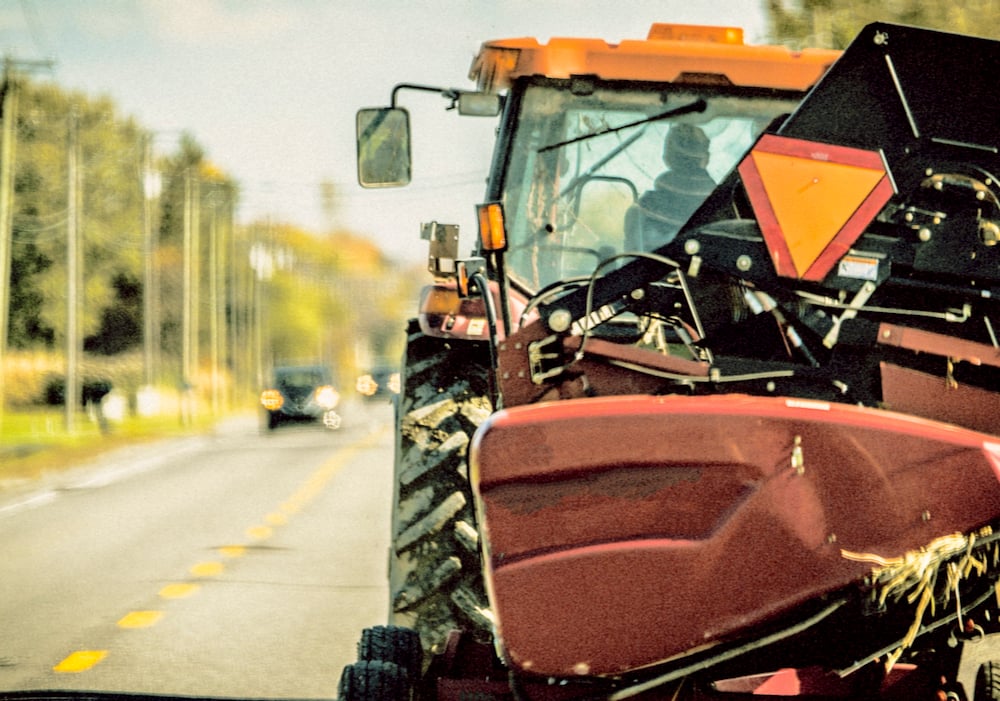Farm safety includes being rail safe

Given their large size, trains often appear to be farther away and travelling much slower than they actually are. Don’t be fooled. It takes the equivalent length of 18 football fields for the average freight train to come to a stop.
Read Also

What’s legal and what’s not for farm equipment on the road
Farm equipment and farm operators are exempt from many of Ontario’s highway transportation regulations, but these exemptions are far from…
With nearly 45,000 kilometres of active railway tracks and roughly 40,000 railway crossings from coast to coast, many Canadians encounter trains daily. That’s especially true in rural areas, where many farms are located near railway tracks.
In 2022, Canada’s incidents between trains and vehicles or people totalled 232. Of those, 66 people died and 43 were seriously injured.
“Many of these incidents occurred in close proximity to the victim’s residence and each one may have been preventable,” CN Police Constable Michael Reid said in reaction to those numbers.
Given their large size, trains often appear to be farther away and travelling much slower than they actually are. Don’t be fooled. It takes the equivalent length of 18 football fields for the average freight train to come to a stop. They travel at speeds up to 100 kilometres an hour and can weigh tens of thousands of tonnes.
While farm machinery is larger than most other vehicles, it is still no match for trains. Most farm crossings are passive (without warning lights, bells or gates) so it’s essential to take extra care to ensure safety.
Safe crossings
When approaching a crossing, open the cab windows, turn off radios and fans, remove headsets and listen for oncoming trains. Look in both directions and look around obstructions like mirrors and windshield pillars.
Winter conditions can be particularly hazardous and require extra care, as snow can muffle the sound of approaching trains and ice can cause machinery to slide into crossings.
Once it’s safe to cross, ensure the machinery is properly lined up with the railway crossing. Having the wheels cross tracks at a 90-degree angle will prevent heavily loaded equipment from tipping over. Also check that there is enough room on the other side of the tracks to fully clear the crossing without stopping and that the back of the equipment won’t be within five metres of the tracks if it’s necessary to stop on the other side.
Be aware of equipment
Not all farm machinery can easily cross railway tracks. Low-slung equipment is one example. It can get caught in the tracks and should never be used to cross.
When using new farm machinery for the first time, especially if it’s particularly wide or heavy, ensure it can cross tracks quickly and safely. Don’t hesitate to contact the railway for assistance regarding any non-standard machinery.
If towing equipment, it’s crucial to prevent it from becoming unhitched when going over farm crossings. Always secure hitch pins with a pin key and remember to watch wagons and other equipment while crossing to ensure nothing dislodges or becomes caught in the tracks.
Getting stuck or stalled
No one wants to get stuck or stalled on train tracks, but if it happens, get out of the machinery cab immediately and move at least 30 metres away. That way, if the equipment is struck by a train, the person can avoid being struck by debris.
Once safely away from the machinery, contact the railway company to let them know a vehicle is blocking the tracks. Railway companies post their emergency numbers on a blue sign under the crossbuck (the traffic sign used to indicate a railway crossing) or near the crossing. The number may also be posted on a nearby signal house.
This is the first number to call if machinery becomes stuck or stalls on the tracks. It is the only way to stop approaching trains. If unable to locate the emergency number, call 911.
Keep it safe
“Farmers and the agriculture industry are crucial to the Canadian economy and by working together we can feed the world. But we all need to make sure we do that safely,” said Reid.
“As trains can take up to two kilometres to stop, always obey the signs and signals at railway crossings. Use precaution and stay alert around crossings to ensure you stay safe during your workday.”
Source: Farmtario.com

